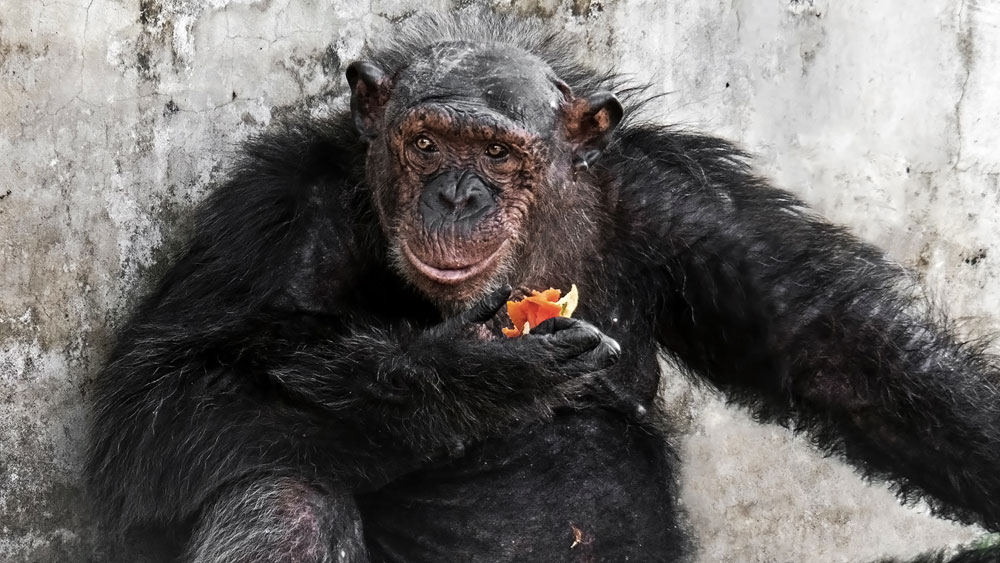Tim Clarey, Ph.D., and Jeffrey P. Tomkins, Ph.D.
Secular scientists are continually trying to humanize ape fossils in an attempt to bridge the wide gap between humans and apes to fit their worldview. But, the missing links remain missing. And new research reconfirms that apes have always been apes.
Australopithecus africanus is claimed by many scientists to have lived from about two to three million years ago in open grassland and forests of South Africa.1 A. africanus is one of several Australopithecus species that are similar to chimpanzees in their anatomy which are used by secular scientists to support their notion of human evolution.
Secular scientists routinely confirm Australopithecus species as being nothing more than apes, and this new study is no different.2,3 In a recent paper published in Nature, Renaud Joannes-Boyau of the Geoarchaeology and Archaeometry Research Group at Southern Cross University, New South Wales, Australia, and colleagues reported that A. africanus exhibited seasonal eating patterns, similar to modern apes.1 The authors noted,
In order to examine A. africanus fossils for seasonal food variations, the scientists conducted elemental mapping on two first molars from one A. africanus specimen (StS 28) and on a canine tooth from a second specimen (StS 51). Their methods included detailed measurements of barium, calcium, lithium, and strontium ratios. This allowed them to create a comprehensive record of variations in food intake during tooth development.1 For example, barium concentration is heavily tied to the volume of breast milk intake while the ape was growing.
Their results showed overlapping and highly cyclical patterns in Ba/Ca, in Sr/Ca and in Li/Ca ratios, indicating repeated behavior over time.1 They further noted that, “A similar recurring pattern in Li/Ca, Ba/Ca and Sr/Ca ratios has previously been observed in modern wild orangutans (both Pongo abelii and Pongo pygmaeus) up to nine years of age.”
The authors interpreted these patterns as reflective of seasonal (wet and dry seasons) food adaptations in a grassland environment and fluctuations in food availability. But most importantly, the authors confirm the ape-like nature of Australopiths in contrast to humans by stating,
Australopithecus africanus ate like an ape because it was an ape. Once again, there is no evidence that A. africanus was in any way or form related to humans. In fact, honest evolutionists themselves have admitted this fact recently in a 2016 Royal Society research paper bearing the provocative title “From Australopithecus to Homo: the transition that wasn’t.” In this paper, the authors stated:
God made apes and then He made Adam and Eve who were fully human from the start.
References
1. Joannes-Boyau, R. et al. 2019. Elemental signatures of Australopithecus africanus teeth reveal seasonal dietary stress. Nature. 572: 112-115.
2. Tomkins, J. P. 2012. Australopithecus Was a Well-Adapted Tree Climber. Creation Science Update. Posted on ICR.org on November 12, 2012, accessed August 7, 2019.
3. Tomkins, J. P. 2014. Australopith Child Gets an Academic Spanking. Creation Science Update. Posted on ICR.org on September 24, 2014, accessed August 7, 2019.
4. Kimbel, W. H. and B. Villmoare. 2016. From Australopithecus to Homo: the transition that wasn’t. Philosophical Transactions of the Royal Society B. 371 (1698): 20150248.
*Dr. Clarey is Research Associate is at ICR and earned his doctorate in geology from Western Michigan University. Dr. Tomkins is Life Sciences Director at ICR and earned his doctorate in genetics from Clemson University.





















